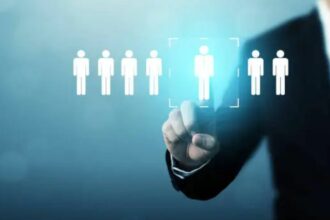HR will play the cornerstone role in rebooting organizations and upskilling employees
It is interesting to see how technology has become highly consequential for businesses, impacting both people and customers. Recently, I moderated a virtual roundtable session which had participants from organizations across industries, namely Darwin Rivers from Peak Outsourcing, Jextaire Fabian from Corteva Agriscience and Kranti Munje from Medusind. During the discussion, we reached a consensus on the topics such as the latest advancements in robotics, artificial intelligence, machine learning, data and algorithms and their importance for the growth and survival of businesses today.
While the seeds of technology and automation were sown a long time ago, technological transformation was expected to heighten in 2025. However, the present-day pandemic has expedited the shift and the year 2020 is proving to be the bridge year. Technology has emerged as the greatest equalizer among businesses across industries and a catalyst of growth.
Pandemic: The missing clause from Business Continuity Plans
Be it legacy businesses or new organizations, business continuity plans do not typically contain provisions for dealing with a pandemic. Darwin shares, “Our BCPs were aligned to deal with earthquakes, hurricane, typhoon but not the pandemic. Technology has helped a great deal in quickly moving forward despite the odds and now we are ahead on capitalizing it to enable employees for remote working, reduce geographical boundaries, minimize human need for repetitive tasks and improve the experiences of customers.”
Adopting Zoom for a Zoomba experience
Some organizations benefitted drastically by being ahead of the tech curve. For instance, Jextaire emphasized that his Company was tech-ready even before the pandemic, which allowed them to secure their targets. Being in the agricultural industry, demand for their product did not shift; the challenge was to keep employees ‘productivity intact during the new normal of a swapped workplace, anxious co-workers and online communication.
“We were able to report effective productivity and job satisfaction on account of the connections we established with the help of technology. We coined the term ‘Zoomba’ to provide the teams an experience likened to Zoomba through Zoom meetings which ranged from energizing quiz sessions to watching over colleagues create magic in their kitchen and then eating together virtually amongst many other such initiatives,” shared Jextaire .
Lot of travel to no travel
For employees of Medusind India, off-site working was a rarity. This organization operated under strict compliance and regulatory measures whereby off-site working was seldom encouraged. Given the advanced technology at their disposal, enabling their employees to work from home was not problematic, but new ways of engaging remote workers had to be devised. Kranti says, “We leveraged social media platform Facebook, to motivate and energize employees by running virtual events, activities and competitions extending from cooking for family to showing off your home office among many others. We were really tested for our resilience as we moved from a travel intensive work culture to zero-travel.”
The decisive role of Gen Z in navigating the new normal
Unsurprisingly, all the leaders arrived at a consensus on Generation Z’s buoyancy in coping with the uncertainty and adding value to the organization. Darwin shared, “Technology has emerged as the primary enabler in the new workplace and Gen Z, the native netizens, are its biggest users; they are also innovating further and adding value to technologies available to them.”
Jextaire opined, “We use drones to navigate the large plantations, this cohort has tweaked these drones to improve their efficiency. I believe that they are go-getters, with little support they make things happen.” Kranti adds, “We have a large number of millennials and Gen Z in Medusind. Budget or no budget, they are able to produce results. I believe if you can tap their energy and knowledge, give them a free hand and stand by them, they are able to do wonders and that too with responsibility.”
Aligning employee engagement to meet the requirement of newer generations
Comparing the millennials and Gen Z, Darwin says, “Unlike their predecessors who behave entitled and ask too many questions, Gen Z learn fast and are more allied with fast pace development. Aligning your engagement programs to enthuse this generation is essential, otherwise they will get bored.”
We know that this cohort is increasing its headcount in workplaces and that engaging them through erstwhile methods will not yield results. This tech savvy generation needs reach-outs at a regular basis, which is possible only with an AI-backed chatbot. Amara by HireXP is an evolved chatbot that uses machine learning and a natural language processor to decipher emotions and convert them to numerical values ranging from one-to-five, with one representing no engagement and five representing maximum engagement. This dynamic, personified robot evaluates employees’ emotions on all essential elements of employee engagement such as career development, performance management, rewards & recognition, work-life integration, leadership and culture. Thus, Amara not only points out disengaged employees but also pinpoints the reason(s) for disengagement.
Takeaway
Technology will help to make organizations more agile and able to deal with future uncertainties and complex business environment. The way forward is high-tech and leaner organizations with machines replacing humans at work. The need of the hour is to upskill talent to be able to perform future jobs unknown at present. Employee engagement needs a makeover so that the newer generations can be engaged using advance technologies. HR will play the cornerstone role in rebooting organizations and upskilling employees.















